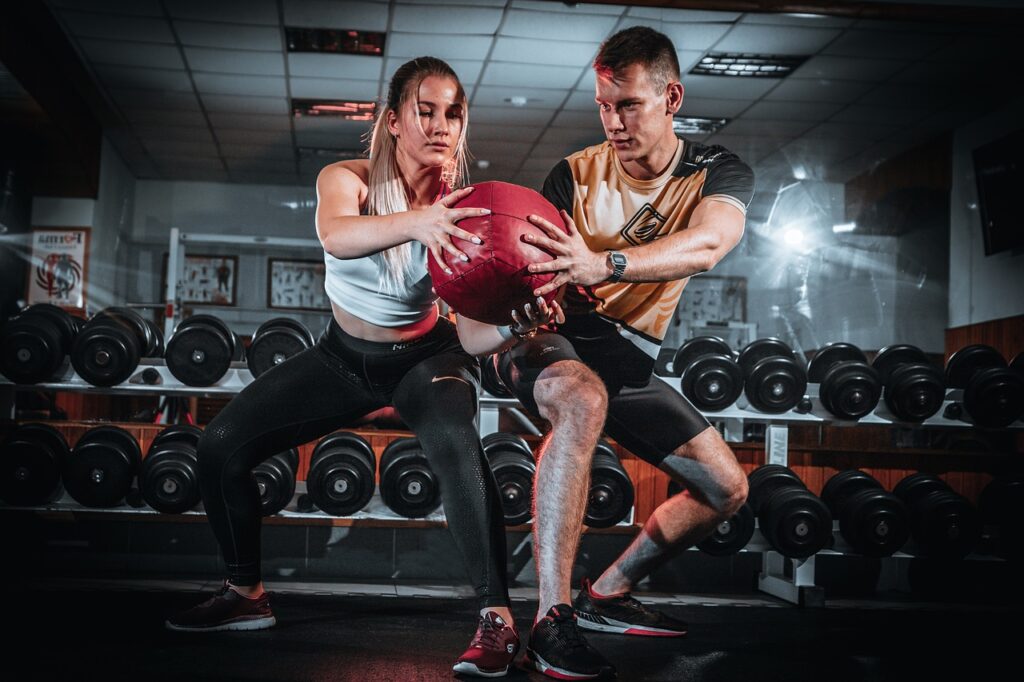Effective Ways to Get Your Heart Pumping: Boosting Cardiovascular Health and Fitness

Maintaining a strong cardiovascular system is essential for overall health and well-being. Whether you’re trying to lose weight, improve endurance, or simply stay active, getting your heart pumping regularly has countless benefits. It strengthens the heart, improves circulation, increases lung capacity, and helps reduce the risk of heart disease and stroke. With a variety of exercises to choose from, finding the right method to elevate your heart rate can be both fun and rewarding.
This article explores effective ways to get your heart pumping, from traditional cardio exercises to innovative high-intensity workouts. We’ll also dive into the science behind cardiovascular health and provide tips for getting the most out of your heart-pumping exercises.
The Importance of Cardiovascular Exercise
Before diving into specific exercises, let’s discuss why getting your heart pumping is so crucial for your health.
1. Improved Heart Health
The heart is a muscle, and like any other muscle, it gets stronger with regular exercise. When you engage in cardiovascular exercises that increase your heart rate, you’re training your heart to pump blood more efficiently, which improves circulation throughout your body. Over time, this reduces the risk of cardiovascular diseases like high blood pressure, heart attacks, and strokes.
2. Enhanced Lung Capacity
Getting your heart rate up through aerobic activity also challenges your lungs. As you breathe heavily during exercise, your lungs work harder to deliver oxygen to your muscles. Regular cardio workouts increase lung capacity, making it easier for you to perform daily tasks, stay active, and even boost your endurance in sports.
3. Calorie Burn and Weight Loss
Elevating your heart rate during exercise helps burn calories, which can contribute to weight loss or weight maintenance. Activities that get your heart pumping, like running or cycling, tend to burn more calories per minute compared to strength training or lower-intensity movements, making them ideal for those looking to shed pounds.
4. Stress Relief and Mental Health
Cardio exercise triggers the release of endorphins, often referred to as “feel-good” hormones. These endorphins help reduce stress and anxiety, improve mood, and promote better sleep. Regular cardiovascular activity can also help prevent mental health issues such as depression and chronic stress.
5. Better Metabolic Health
Regularly engaging in heart-pumping activities helps improve metabolic function. This means your body becomes more efficient at processing sugars and fats, reducing your risk of diabetes and other metabolic diseases.
Effective Ways to Get Your Heart Pumping
There are many ways to get your heart rate up, from traditional exercises like running and swimming to more creative activities like dancing and high-intensity interval training (HIIT). Here are some of the most effective and enjoyable ways to get your heart pumping and boost your cardiovascular health.
1. Running and Jogging
Running is one of the simplest and most accessible forms of cardiovascular exercise. Whether you prefer running outdoors or on a treadmill, it’s an excellent way to get your heart pumping quickly.
- Why It Works: Running uses large muscle groups, primarily your legs, to propel you forward, which requires a lot of energy and elevates your heart rate. It also improves your endurance, strengthens your leg muscles, and enhances lung capacity.
- How to Do It: Start with a light jog to warm up, and then increase your pace to a moderate or vigorous level. Aim to run for 20-30 minutes, adjusting the duration as your fitness improves.
- Tip: Incorporating intervals—short bursts of high-speed running followed by walking or jogging—can help you maximize calorie burn and improve cardiovascular fitness.
2. Cycling
Cycling is a low-impact cardio exercise that is great for people of all fitness levels. Whether you’re riding a stationary bike indoors or cycling outdoors, it’s an excellent way to get your heart pumping while minimizing stress on your joints.
- Why It Works: Cycling primarily engages your lower body, particularly your quads, hamstrings, and glutes. It’s a great way to build leg strength while improving cardiovascular endurance.
- How to Do It: Start with a steady pace to warm up, and then increase your speed or resistance for 30-45 minutes of moderate-intensity cycling. For a more intense workout, incorporate hills or intervals of high-intensity sprints.
- Tip: If you’re using a stationary bike, try a spin class or follow an online cycling program to challenge yourself and stay motivated.
3. Swimming
Swimming is a full-body cardiovascular workout that provides resistance through water, making it highly effective at burning calories and building endurance without putting stress on your joints.
- Why It Works: Swimming engages your arms, legs, core, and back, giving you a complete workout while increasing your heart rate. It also improves lung capacity and is especially beneficial for individuals with joint issues.
- How to Do It: Choose a stroke you’re comfortable with (freestyle, breaststroke, etc.), and swim at a steady pace for 20-30 minutes. As you improve, increase your distance or incorporate faster intervals.
- Tip: If you’re new to swimming, consider starting with water aerobics or swimming laps in short bursts, gradually building up your endurance.
4. Jump Rope
Jumping rope is an underrated but highly effective cardiovascular exercise. Not only does it improve coordination and agility, but it also gets your heart rate up quickly, making it an excellent choice for short, high-intensity workouts.
- Why It Works: Jumping rope is a high-impact activity that engages your entire body. It strengthens your legs, improves balance, and quickly elevates your heart rate, making it a powerful calorie-burning exercise.
- How to Do It: Start with 30-second intervals of jumping, followed by 15-30 seconds of rest. Gradually increase the duration as you get more comfortable. Try different jump styles—such as single leg, double unders, or criss-cross—to keep it interesting.
- Tip: Keep your jumps low to the ground to reduce impact on your joints, and focus on maintaining a steady rhythm.
5. High-Intensity Interval Training (HIIT)
HIIT involves alternating between periods of intense effort and short recovery intervals, making it one of the most efficient ways to get your heart pumping in a short amount of time. HIIT can be done with bodyweight exercises, cardio machines, or a combination of both.
- Why It Works: HIIT pushes your body to its limit, requiring maximum effort during the work intervals. This challenges your cardiovascular system, improves endurance, and burns more calories in less time.
- How to Do It: Choose 4-5 exercises (such as burpees, squats, push-ups, and mountain climbers) and perform each for 30-40 seconds, followed by 15-20 seconds of rest. Repeat for 3-4 rounds with 1-2 minutes of rest between rounds.
- Tip: Start with beginner-friendly intervals and progress to more advanced moves like plyometric jumps or sprints as your fitness improves.
6. Dancing
Dancing is a fun and enjoyable way to get your heart rate up without feeling like you’re working out. Whether you enjoy salsa, Zumba, or freestyle dancing, moving to the rhythm of your favorite tunes can be a great way to stay active.
- Why It Works: Dancing is a full-body workout that improves cardiovascular fitness, coordination, and balance. It’s also an excellent way to reduce stress and boost your mood.
- How to Do It: Join a dance class or follow along with an online dance workout. Aim for 30-45 minutes of continuous movement to keep your heart rate elevated.
- Tip: Don’t be afraid to dance around your living room! The key is to keep moving and have fun with it.
7. Rowing
Rowing is a low-impact, full-body workout that strengthens your arms, back, legs, and core while getting your heart pumping. Whether you use a rowing machine or row outdoors, it’s a great way to build endurance and muscle.
- Why It Works: Rowing engages both your upper and lower body simultaneously, making it a powerful cardiovascular workout. It’s also a low-impact exercise, which means it’s easier on your joints compared to running or jumping.
- How to Do It: Start with a steady rowing pace for 5-10 minutes to warm up, and then alternate between 30-second sprints and 30-60 seconds of easy rowing for 20-30 minutes.
- Tip: Focus on maintaining proper form by driving through your legs and pulling the handle toward your chest, keeping your back straight.
Tips for Maximizing Your Cardio Workouts
1. Warm Up and Cool Down
Always begin your workout with a proper warm-up to prepare your muscles and joints for activity. Dynamic stretches or 5-10 minutes of light cardio (such as walking or jogging) can help prevent injury. After your workout, take time to cool down and stretch to improve flexibility and recovery.
2. Monitor Your Heart Rate
Use a fitness tracker or heart rate monitor to keep track of your heart rate during exercise. For moderate-intensity cardio, aim to keep your heart rate between 50-70% of your maximum heart rate. For vigorous-intensity workouts, aim for 70-85%. To estimate your maximum heart rate, subtract your age from 220.
3. Progress Gradually
If you’re new to cardiovascular exercise, start slowly and gradually increase the intensity and duration of your workouts. This allows your body to adapt and reduces the risk of injury or burnout.
4. Stay Consistent
For optimal cardiovascular health

Your article helped me a lot, is there any more related content? Thanks! https://accounts.binance.info/en/register-person?ref=JHQQKNKN
Can you be more specific about the content of your article? After reading it, I still have some doubts. Hope you can help me.
I don’t think the title of your article matches the content lol. Just kidding, mainly because I had some doubts after reading the article. https://www.binance.com/bn/register?ref=UM6SMJM3
Your article helped me a lot, is there any more related content? Thanks! https://www.binance.com/en-NG/register?ref=JHQQKNKN
Your article helped me a lot, is there any more related content? Thanks! https://accounts.binance.com/register?ref=P9L9FQKY
Your article helped me a lot, is there any more related content? Thanks!
Your point of view caught my eye and was very interesting. Thanks. I have a question for you.
Your point of view caught my eye and was very interesting. Thanks. I have a question for you.
I don’t think the title of your article matches the content lol. Just kidding, mainly because I had some doubts after reading the article.